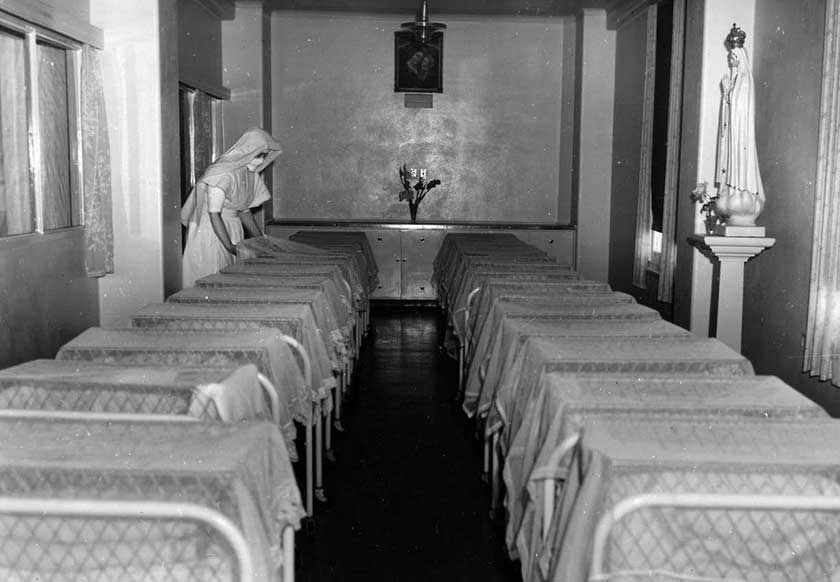History of St John of God Ballarat Hospital - 1952 opening an unfinished hospital
Renovations took place at the hospital in the 1950s to expand its offerings to the Ballarat community. However, the massive cost meant that the hospital wasn’t able to be finished all at once, so a request was put in to open part of the hospital while the rest of the renovations were being completed.
5 Apr 2018
Ballarat prosperity calls for more renovations
Ballarat prospered during the 1950s with a range of industrial and commercial offerings and tourism that included popular attractions such as the Begonia Festival and special events such as the rowing on Lake Wendouree for the 1956 Olympic Games.
A small loan from the Australian Mutual Provident Society (AMP), and donations from the local community, provided enough finance to finish and open two floors of the new St John of God Ballarat Hospital building on Sunday 3 August 1952.
Among the donations were £1,000 each from Pierce Cody Pty Ltd and Michael Kane of Ballarat.
Our history records show that the renovations were not finished: ‘Not that the colossal job is finished; it’s simply that a special effort has been made to complete and equip two of the five great floors … to end the heartbreaking necessity for turning away innumerable patients who clamour continuously for hospital beds’ and to ensure ‘the hospital will quickly earn something to offset the staggering sums that have been paid for its erection and equipment … unless the faith of the building sisters is backed by the charity of the people it’s going to be a grievous burden on the nuns for many years’.
Maternity beds in desperate need
So pressing was the need for more maternity beds in Ballarat, one hundred women booked in to the new maternity wing on the first floor before it opened.
Patrick Brophy, the architect, had pleaded in May 1952 for special permission from the Hospitals and Charities Commission for the Sisters to be allowed to occupy the finished sections of the new building while the remainder were being completed.
It all comes down to money
Our history records show that finances were tight: "They were having ‘some difficulty in financing [its] immediate completion’ as a large sum had already been spent: ‘Your permission to occupy portion of the building would be of great benefit to the Sisters … in this way they will be able to give some service at a much earlier date and obtain some revenue to help complete the building’."
Permission was granted, and the first and second floors were ready by August for patients, but the operating theatres on the fourth floor were not.
What’s next?
We take a look at how the hospital managed to raise enough money to fund the completion of the renovations.
You may be interested in


